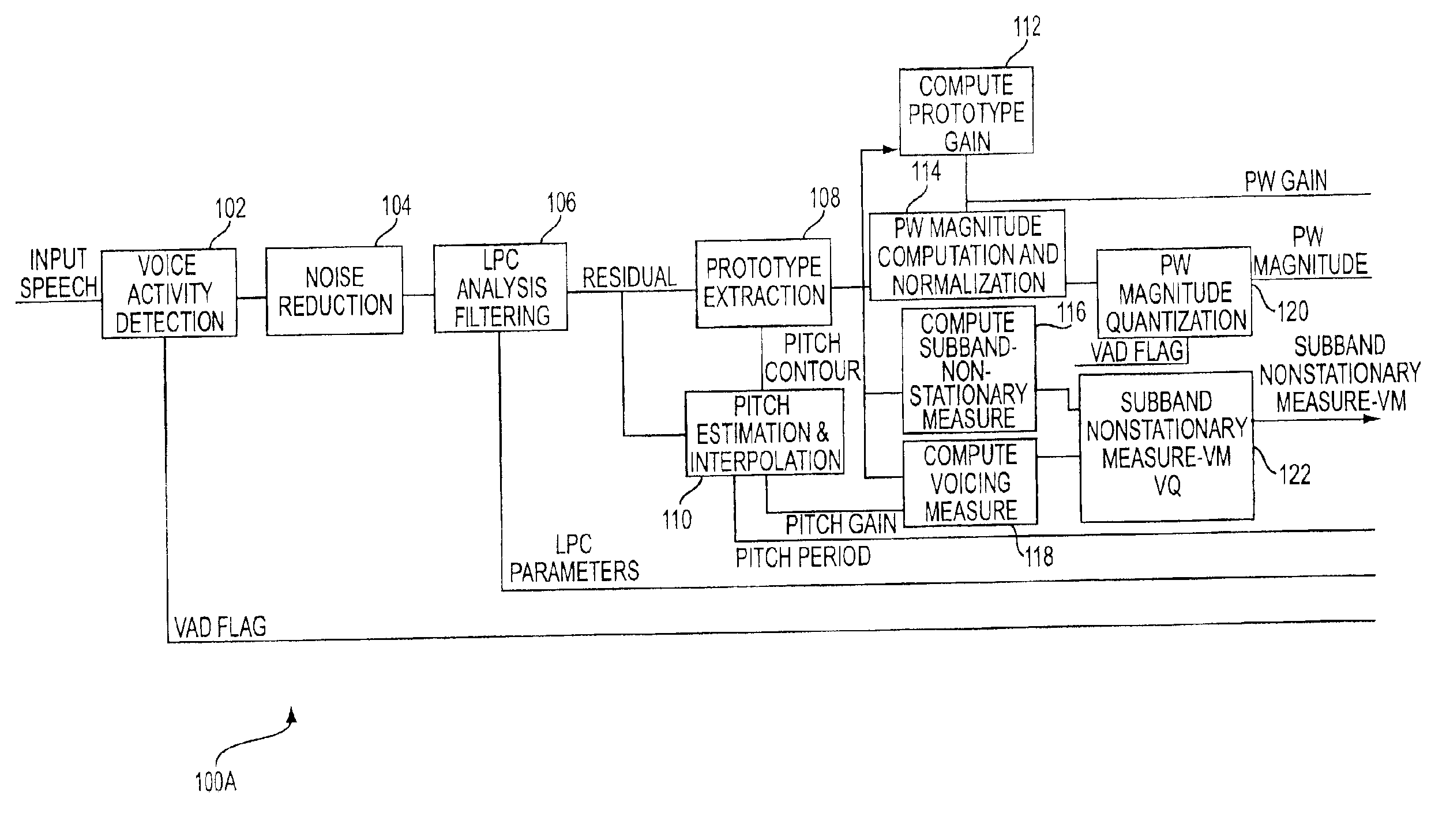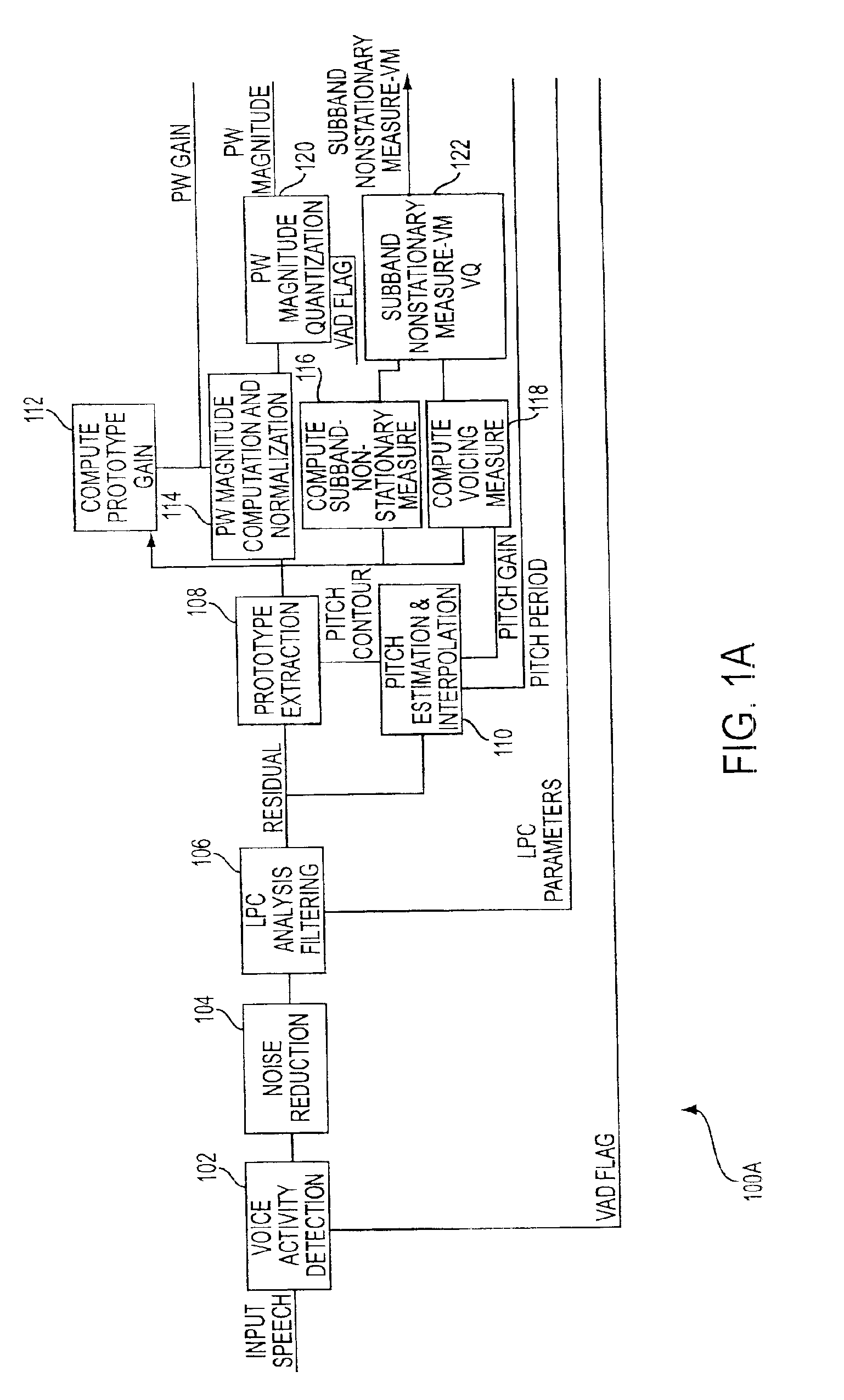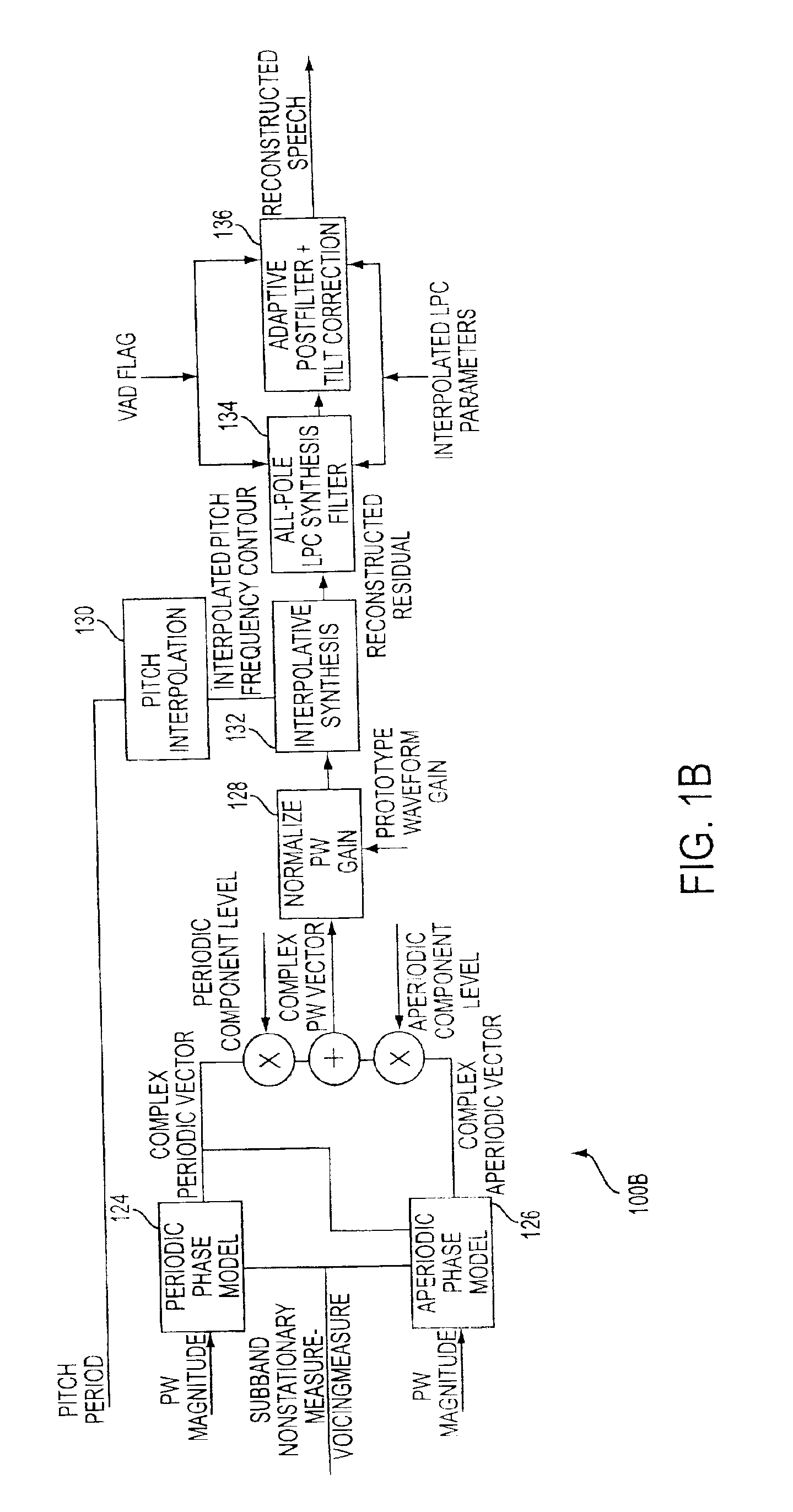Prototype waveform phase modeling for a frequency domain interpolative speech codec system
a frequency domain and codec technology, applied in the field of communication system low bit rate speech coding methods and systems, can solve the problems of significant increase in the algorithmic delay of prior art coding schemes, insufficient speech encoding techniques, and inability to adequately address the need for speech encoding techniques
- Summary
- Abstract
- Description
- Claims
- Application Information
AI Technical Summary
Benefits of technology
Problems solved by technology
Method used
Image
Examples
Embodiment Construction
[0030]FIGS. 1A and 1B are block diagrams of a Frequency Domain Interpolative (FDI) coder / decoder (CODEC) 100 for performing coding and decoding of an input voice signal in accordance with an embodiment of the present invention. The FDI CODEC 100 comprises a coder portion 100A which computes prototype waveforms (PW) and a decoder portion 100B which reconstructs the PW and speech signal.
[0031]Specifically, the coder portion 100A illustrates the computation of PW from an input speech signal. Voice activity detection (VAD) 102 is performed on the input speech to determine whether the input speech is actually speech or noise. The VAD 102 provides a VAD flag which indicates whether the input signal was noise or speech. The detected signal is then provided to a noise reduction module 104 where the noise level for the signal is reduced and provided to a linear predictive (LPC) analysis filter module 106.
[0032]The LPC module 106 provides filtered and residual signals to the prototype extract...
PUM
 Login to View More
Login to View More Abstract
Description
Claims
Application Information
 Login to View More
Login to View More - R&D
- Intellectual Property
- Life Sciences
- Materials
- Tech Scout
- Unparalleled Data Quality
- Higher Quality Content
- 60% Fewer Hallucinations
Browse by: Latest US Patents, China's latest patents, Technical Efficacy Thesaurus, Application Domain, Technology Topic, Popular Technical Reports.
© 2025 PatSnap. All rights reserved.Legal|Privacy policy|Modern Slavery Act Transparency Statement|Sitemap|About US| Contact US: help@patsnap.com



